
The Endangered Species Act of 1973 is the primary law in the United States for protecting imperiled species. Designed to protect critically imperiled species from extinction as a "consequence of economic growth and development untempered by adequate concern and conservation", the ESA was signed into law by President Richard Nixon on December 28, 1973. The U.S. Supreme Court called it “the most comprehensive legislation for the preservation of endangered species enacted by any nation". The purposes of the ESA are two-fold: to prevent extinction and to recover species to the point where the law's protections are not needed. It therefore “protect[s] species and the ecosystems upon which they depend" through different mechanisms. For example, section 4 requires the agencies overseeing the Act to designate imperiled species as threatened or endangered. Section 9 prohibits unlawful ‘take,’ of such species, which means to “harass, harm, hunt...” Section 7 directs federal agencies to use their authorities to help conserve listed species. The Act also serves as the enacting legislation to carry out the provisions outlined in The Convention on International Trade in Endangered Species of Wild Fauna and Flora (CITES). The Supreme Court found that "the plain intent of Congress in enacting" the ESA "was to halt and reverse the trend toward species extinction, whatever the cost." The Act is administered by two federal agencies, the United States Fish and Wildlife Service (FWS) and the National Marine Fisheries Service (NMFS). FWS and NMFS have been delegated the authority to promulgate rules in the Code of Federal Regulations to implement the provisions of the Act.

The conservation status of a group of organisms indicates whether the group still exists and how likely the group is to become extinct in the near future. Many factors are taken into account when assessing conservation status: not simply the number of individuals remaining, but the overall increase or decrease in the population over time, breeding success rates, and known threats. Various systems of conservation status exist and are in use at international, multi-country, national and local levels as well as for consumer use.
In botany, a section is a taxonomic rank below the genus, but above the species. The subgenus, if present, is higher than the section, and the rank of series, if present, is below the section. Sections may in turn be divided into subsections.
Plagiochila deltoidea is a species of liverwort in the family Plagiochilaceae. It was first described by Lindenb. It is found in New Zealand and Tasmania. It resides on wet ground. It can grow to lengths of up to 60 mm with 3 mm wide leaves.

A near-threatened species is a species which has been categorized as "Near Threatened" (NT) by the International Union for Conservation of Nature as that may be considered threatened with extinction in the near future, although it does not currently qualify for the threatened status.
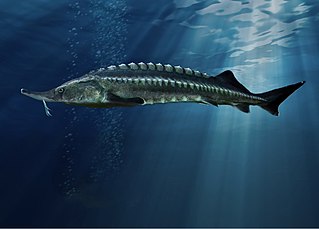
An IUCN Red List Critically Endangered (CR) species is one that has been categorized by the International Union for Conservation of Nature as facing an extremely high risk of extinction in the wild. As of 2021, of the 120,372 species currently tracked by the IUCN, there are 6,811 species that are considered to be Critically Endangered.

This is a list of taxa comprising the flora of the Antipodes Islands. It includes some species known as megaherbs.

Villa's gray shrew is a shrew native to northeastern Mexico, where it is called musaraña.
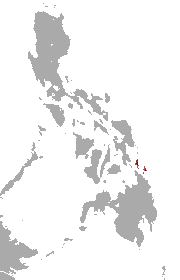
The Dinagat gymnure is a species of mammal in the family Erinaceidae. It is endemic to the Philippines.

Buettikofer's shrew is a species of mammal in the family Soricidae. It is found in southern Nigeria and scantly present in Ivory Coast, Ghana, Guinea, Liberia and Sierra Leone. Its natural habitat is subtropical or tropical moist lowland forests. It is threatened by habitat loss.
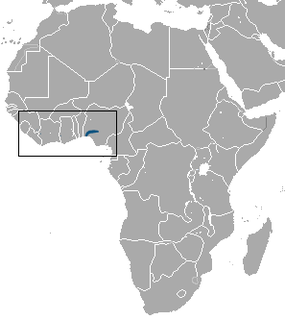
Crocidura grandiceps is a species of mammal in the family Soricidae. It is found in Benin, Ivory Coast, Ghana, Guinea, Liberia, Nigeria, and Togo. Its natural habitat is subtropical or tropical moist lowland forests. It is threatened by habitat loss due to agriculture and aquaculture as well as logging and wood harvesting. To increase habitat protection for the C. grandiceps, in-place land/water protection conservation actions are in place. The vernacular name large-headed shrew is sometimes applied to C. grandiceps but has also been used for the entire related genus Paracrocidura. The IUCN List categorizes the C. grandiceps as Near Threatened as of 2008.

The Ugandan lowland shrew is a species of mammal in the family Soricidae. It is found in Kenya and Uganda. Its natural habitats are subtropical or tropical swamps and subtropical or tropical moist montane forest. It is threatened by habitat loss.
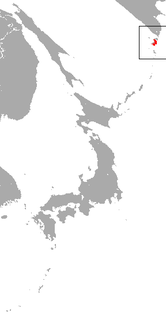
The Paramushir shrew is a species of mammal in the family Soricidae. It is endemic to Russia. Its natural habitat is temperate forests. It is threatened by habitat loss.

Day's shrew is a species of mammal in the family Soricidae. It is endemic to India. Its natural habitat is subtropical or tropical dry forests. It is threatened by habitat loss.
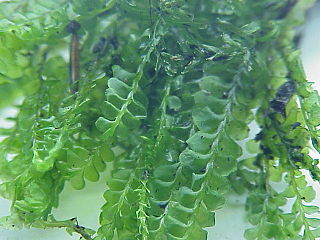
Plagiochila is a large, common, and widespread genus of liverworts in the order Jungermanniales. It is a member of the family Plagiochilaceae within that order. There may be anywhere from 500 to 1300 species, most of them from the tropics; the exact number is still under revision. The genus also has a wide distribution in temperate and arctic areas.
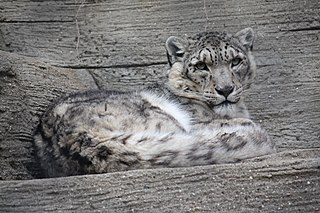
Pakistan's native fauna reflect its varied climatic zones.

An endangered species is a species that is very likely to become extinct in the near future, either worldwide or in a particular political jurisdiction. Endangered species may be at risk due to factors such as habitat loss, poaching and invasive species. The International Union for Conservation of Nature (IUCN) Red List lists the global conservation status of many species, and various other agencies assess the status of species within particular areas. Many nations have laws that protect conservation-reliant species which, for example, forbid hunting, restrict land development, or create protected areas. Some endangered species are the target of extensive conservation efforts such as captive breeding and habitat restoration.

A vulnerable species is a species which has been categorized by the International Union for Conservation of Nature as likely to become endangered unless the circumstances that are threatening its survival and reproduction improve.

Plagiochila fasciculata is a species of liverwort in the family Plagiochilaceae. Found in eastern Australia and New Zealand in moist sites.
















